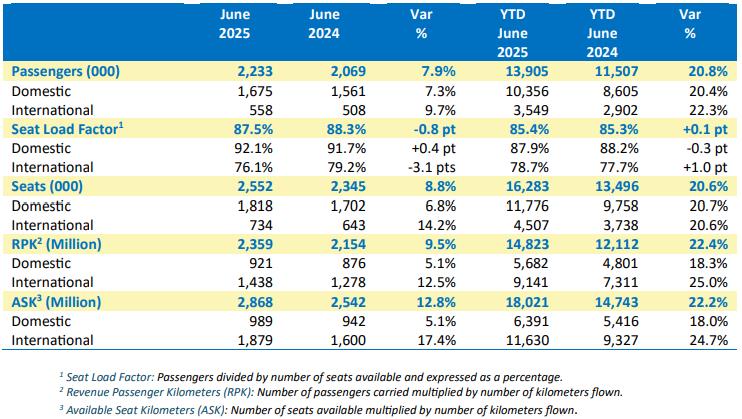Cebu Pacific (CEB) carried 2.2 million passengers in June 2025, a 7.9% increase compared to the same period last year. Seat load factor (SLF) decreased to 87.5% from 88.3% last year while seat capacity grew by 8.8%.
Domestic passengers grew 7.3% versus June 2024 on 6.8% higher seats, with a SLF of 92.1%. International passenger traffic, meanwhile, grew 9.7% year over year on 14.2% higher seats, which resulted in a 3.1 percentage point decrease in SLF to 76.1%.
For year-to-date 2025, CEB passengers grew to 13.9 million, marking a 20.8% increase from 11.5 million in 2024. Domestic passengers grew 20.4% to 10.4 million, while international passengers grew 22.3% to 3.5 million. SLF averaged 85.4%, while overall capacity in seats grew 20.6% to 16.3 million.

“Despite the earlier onset of the academic calendar – moving the start of classes from late July last year to mid-June this year – passenger traffic and seat load factors remained resilient. Domestic demand remained strong shown by its 92% load factor while international traffic grew by over 9% as we invested in connecting cities outside Manila to more international ports,” said Xander Lao, President and Chief Commercial Officer of Cebu Pacific. “For the first half of 2025, our load factors have increased despite seat growth of more than 20%. This reflects the continued strength of air travel demand within our network. Capacity for the second half of June was reduced due to the commencement of the leaner season. This also aligns with ongoing proactive management of engine and supply chain issues and as such we would expect capacity growth levels to stay at similar levels through the third quarter before rising again in the fourth quarter.”



